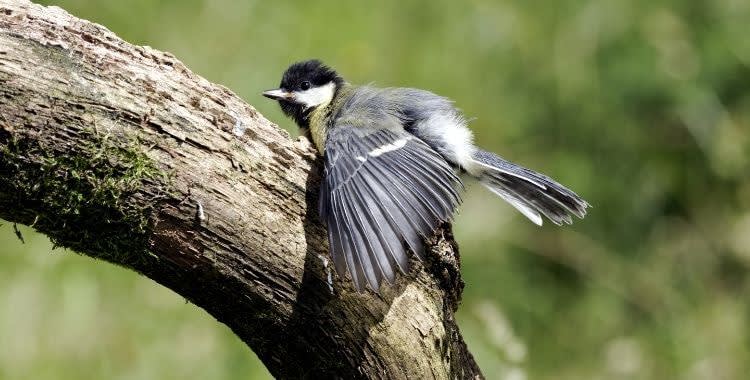Lack of UV lighting for parrots can lead to health problems, including feather plucking. We explore light importance in the first of a series of articles.
Is your parrot insured? Get a quote for up to £5,000 of vet fee cover, death and theft cover | We’ve been insuring exotic pets since 1996 | Check out our customer reviews on Feefo.
John Courteney-Smith MRSB FLS is Head of Science and Innovation at Arcadia Reptile and David Alderton is an expert in reptile and pet care.
Birds and sunlight | Window light | Artificial D3 supplements | More about vitamin D3 | The science behind light | How to pick the right artificial light for your bird
For most of us living outside the tropics, the start of spring serves as a real tonic. The temperature climbs again, as the sun’s rays grow stronger.
It’s not just a feeling – there are measurable physiological changes that take place in our bodies during spring.
As one example, the levels of the ‘feel-good’ hormone serotonin increase, boosting our feeling of well being.
And we are not alone in benefiting from warm and intense sunshine. It is no coincidence that birds start singing and making preparations to nest at this time of year.
Apart from making us feel good, sunlight also impacts on our physical health by triggering the manufacture of Vitamin D3 in our skin. This in turn is essential for calcium metabolism within our body.
 Vitamin D is regarded as the sunshine vitamin
Vitamin D is regarded as the sunshine vitamin
Birds and sunlight
In the case of birds, sunlight has a similar effect where skin is exposed, usually around the head, legs and feet. It can also penetrate through denser feathers through to the skin.
On sunny days, you may notice birds resting with their plumage raised, especially over their lower back, making it easier for sunlight to reach their skin.
Many species do this to expose the preen gland that’s located at the base of the tail. The sunlight enables the manufacture of a waterproofing oil, that contains D3.
As the bird preens and anoints its feathers, it spreads the oil containing the D3, with deposits accumulating on its tongue.
Why is vitamin D3 so important?
The manufacture of vitamin D3 is critical to all birds and is created through direct exposure to the sun’s UV rays. This leads to activation of the vitamin in exposed skin on the preen (or uropygial) gland on the rump.
If birds are not exposed to the UV rays in sunlight, and receive no supplementation, then a calcium deficiency will arise.
Symptoms can include:
- Brittle or weak bones
- In hens it can result in eggs lacking calcium, leaving them soft, with a rubbery texture
- There is an increased risk of egg-binding, with the hen unable to force the egg out of her body. If left untreated egg binding will rapidly be fatal
- The shortage of also calcium impacts on muscular contractions, organ and nerve function
For children, lack of exposure to UV light, or D3 supplementation will ultimately lead to rickets, giving rise to bowed limbs. And in adults this condition is known as osteomalacia.
 A great tit (Parus major) sunbathing, exposing the area of its preen gland to the sun
A great tit (Parus major) sunbathing, exposing the area of its preen gland to the sun
Can birds receive beneficial light through a window?
It is clear that sunlight is central to the well-being of ourselves and other creatures such as birds.
You may think that putting a bird’s cage in front of a window will provide exposure. However normal glass blocks the beneficial ultraviolet rays, only amplifying the impact of infrared rays that cause heat.
So instead of helping your bird, all you’ll be doing is exposing it to excessive heat, and potential heat stroke which is rapidly fatal.
Always locate your bird’s cage away from the window and set alongside a wall. Not only will this reduce heat exposure but it will give your bird a greater sense of security.
 African grey parrots kept as pets can be susceptible to calcium metabolism issues, which can easily result in convulsions. The underlying cause can often be traced to a vitamin D deficiency.
African grey parrots kept as pets can be susceptible to calcium metabolism issues, which can easily result in convulsions. The underlying cause can often be traced to a vitamin D deficiency.
Artificial vitamin D3 supplements
If using supplements you should choose a specific avian one containing D3.
If you try to supplement your bird’s diet using a general purpose “pet” supplement intended for mammals this will not be beneficial.
This is due to the metabolic conversion process.
The initial chemical in this pathway, known as cholesterol, is changed to a form known as Vitamin D2 (ergocalciferol), before then being transformed into Vitamin D3 (cholecalciferol).
Unfortunately, birds do not have the ability to convert Vitamin D2 to the active form of D3, that they require.
The dose that you provide is also very important – make sure that you carefully follow the instructions on the packaging.
Vitamins in general are only required in very small quantities.
Vitamin D3 is a member of the fat-soluble group, meaning that it is stored in the liver. So if you consistently provide too much over a period of time, the liver storage becomes overwhelmed, and it accumulates in the body with toxic side effects.
This, however, does not happen when vitamin D3 is manufactured naturally by exposure to sunlight or a corresponding artificial light source.
Indoor birds until recently could only receive supplements in order to counter vitamin D3 deficiency. Unless as a care giver you were confident enough to take your bird outside, (always wearing a harness to prevent loss or escape).
However developments in specialist UV lighting provide more bird care options.
As a point to note – aviary birds don’t suffer with this issue, as they’re constantly out in the sunlight!
More about vitamin D3
Under normal circumstances of course, there is a clear connection between the energy present in light and the digestion of food.
Calcium is absorbed across the gut, thanks to the influence of Vitamin D3, from the breakdown of food or vitamins, and then utilised in a range of ways. This includes the skeleton and within individual cells.
There are unlikely to be many foods eaten by birds that are rich sources of Vitamin D, especially in the case of household pet birds.
Traditional natural sources of this vitamin are based around liver products, as this is the area of the body where vitamin D is stored.
Cod liver oil was a popular traditional supplement, at a time before synthetic creation of the vitamin was possible.
Some manufacturers of bird seed have since begun artificially supplementing the D3 levels in seeds. They incorporate the vitamin in pellets alongside canary or millet seed, or by adding it under the husk.
The science behind light and UV
Light, as in the visible light that we use to view the world, has a far greater importance than simply allowing us to ‘see’ in a visual sense.
Being part of the electro-magnetic spectrum, light consists of countless trillions of particles called photons, each of which enter our world, pushing into everything that they touch, either reflecting or delivering their energy as they do so.
This is a constant barrage, forming a stream of energy found within the colours of the spectrum. Each colour has a vital impact upon life in its own way.
Infrared light for example heats our world largely through convection. Photons within the infrared part of the spectrum first push into the terrain (meaning everything they encounter) and are stored.
They are subsequently released and converted to long wavelength infrared, and will then warm the air and water molecules in the air.
We have all felt the warmth of the sun, when getting into a hot car perhaps, by touching the door, or even by experiencing sun burn. The sun provides energy, which is available for life to use, and on which it can depend.
The protective impact of the atmosphere
Luckily our atmosphere protects us from the harmful rays that the sun produces such as ultraviolet-C (UV-C), and this means that we only experience wavelengths of light on earth from ultraviolet-B (UV-B) to infrared-B. (This is ignoring microwaves and x-rays and quarks for now, as we know they are there, but we do not know how they impact on nature).
What is a photon?
A photon is best thought of as a ‘package’ or ‘parcel’ of energy. Photons can be likened to a constant un-countable stream of tiny batteries, each carrying a charge and every one impacting on life.
These energy providers push into or bounce off everything that they encounter. Each has a use, and they all help to sustain our planet.
In fact, all light is made up of photons, whether it comes from the sun, a fluorescent light bulb, tungsten lamp or an LED – each one of these photons produced contains a colour and a level of energy.
How to pick the right artificial light for your bird
Specialist UV lamps are able to produce photons which correspond to the full-spectrum of daylight.
In contrast LEDs, for example, are not currently able to generate a usable spectrum of ultraviolet light (UV), nor the correct quantity of output.
Without exposure to the correct lighting, your bird will be vulnerable to both a vitamin D and therefore in turn, a calcium deficiency.
You can learn about the benefits of UV lighting for birds in second article here.
Is your parrot insured? Get a quote for up to £5,000 of vet fee cover, death and theft cover | We’ve been insuring exotic pets since 1996 | Check out our customer reviews on Feefo.
This article has been reproduced for Exotic Direct with the kind permission of John Courteney-Smith MRSB FLS, in conjunction with David Alderton. Many thanks for their support.
The content is owned by John Courteney-Smith MRSB FLS and cannot be reproduced without his permission.

